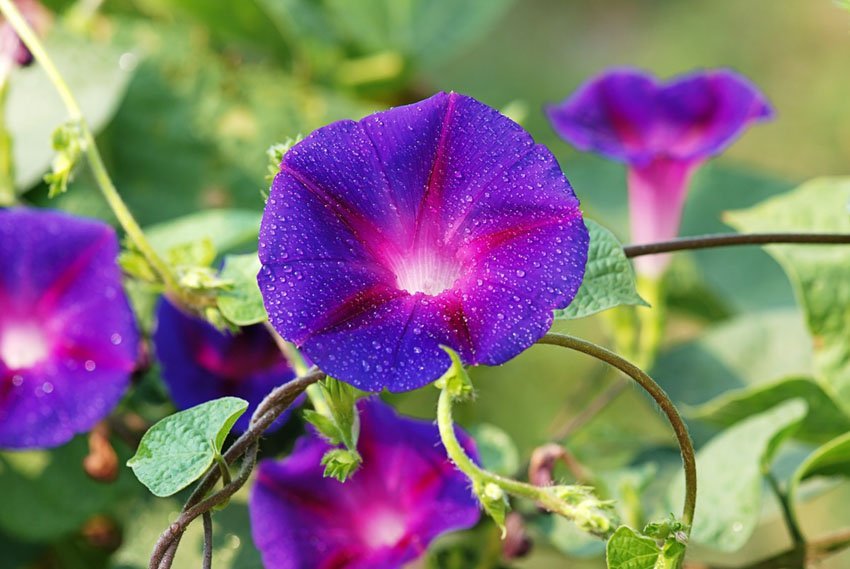Morning Glory

Morning Glory Overview
Ipomoea includes about 500 individual species. In Hawaii, 14 species are native. In the 19th century, Chinese immigrants brought the edible Ipomoea aquatica (also known as ung-choi in Asian cuisines) to Hawaii. The beach morning glory (Ipomoea pescaprae) is an indigenous shoreline plant and can be seen on many Hawaiian beaches. The sweet potato (Ipomoea batatas) was a staple among the ancient Hawaiians.
Frequently Asked Questions
How many morning glory species are native to Hawaii?
Out of approximately 500 Ipomoea species worldwide, 14 are native to Hawaii. Some, like the beach morning glory, are common along the shoreline.
Is sweet potato related to morning glory?
Yes, the sweet potato Ipomoea batatas is part of the morning glory genus. It was a dietary staple of ancient Hawaiians.
Where can I see morning glory in Hawaii?
The beach morning glory Ipomoea pescaprae grows along sandy Hawaiian beaches and is adapted to coastal conditions.
Is any morning glory species edible?
Yes, Ipomoea aquatica (also known as water spinach or ung-choi) is edible and was brought to Hawaii by Chinese immigrants in the 1800s.
Why is it called “morning glory”?
The flowers usually open in the early morning and fade by the afternoon, hence the name "morning glory."








